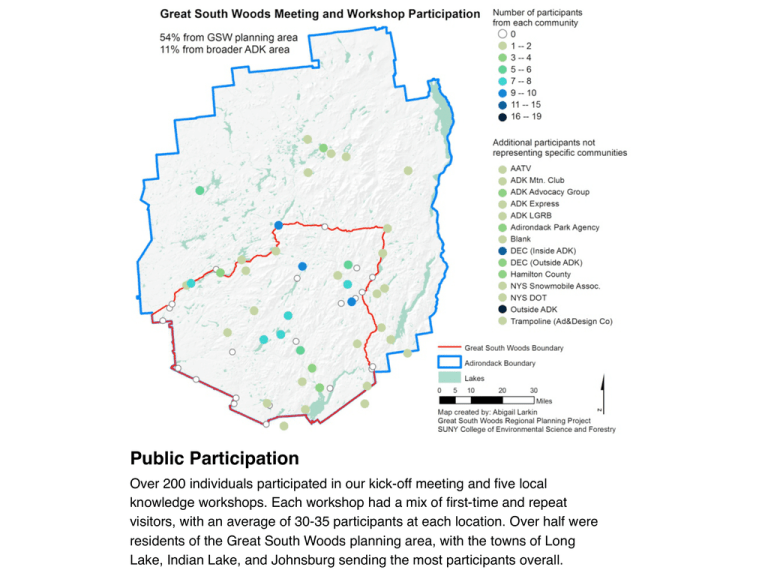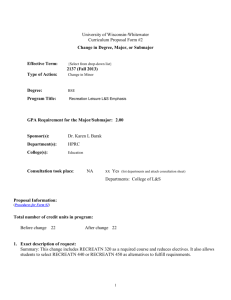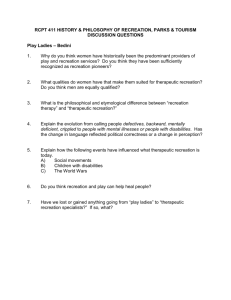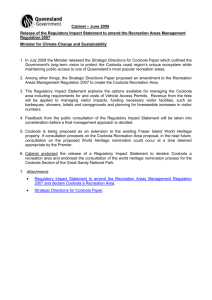Public Participation
advertisement

Public Participation Over 200 individuals participated in our kick-off meeting and five local knowledge workshops. Each workshop had a mix of first-time and repeat visitors, with an average of 30-35 participants at each location. Over half were residents of the Great South Woods planning area, with the towns of Long Lake, Indian Lake, and Johnsburg sending the most participants overall. Piseco Workshop Among other ideas, participants proposed spur hiking trails to create connections among Forest Preserve and communities, including nearby destinations such as Spy Lake and County Line Lake, and the communities of Piseco, Wells and Benson. Old Forge Workshop Participants added a large number of existing features to our inventory, including numerous trails in the Town of Webb, and proposed numerous multi-use and circuit trails, mainly focused in and around the communities of Old Forge and Inlet. Long Lake Workshop Participants proposed a number of spur hiking trails, along with several canoeing trips, and incorporated a wide variety of destinations in proposals. Long Lake, Raquette Lake and Indian Lake were the communities most often included in proposed trail connections to the Forest Preserve. North Creek Workshop Participants proposed a variety of ideas, but the most common were combined trails for hiking and skiing, as well as other multiple uses. Many trails were proposed as traverses connecting backcountry destinations and the communities of Stony Creek, Indian Lake, North Creek and Newcomb. Northville Workshop Participants proposed a number of combined spur trails for hiking and skiing, many including multiple and diverse backcountry destinations, and linking the communities of Corinth, Caroga Lake, Benson, and Wells. Existing features Piseco 75 Northville 74 North,Creek 111 Old,Forge 125 Long,Lake 106 Proposed assets Piseco 32 Old,Forge 23 Northville 30 North,Creek 44 Long,Lake 31 Workshop Data At each local knowledge workshop, we asked participants to help us improve the inventory of existing recreation, infrastructure, and amenities features on paper maps. We also asked participants to propose new ideas for recreation, infrastructure, or amenities that would increase connections among communities and to the Forest Preserve. Participants recorded nearly 500 existing features related to recreation and their experiences in the Great South Woods, and proposed 160 new projects to enhance connections and recreation opportunities. We are now in the process of digitally recording the information collected at these workshops. Multi-use Snowmobile Bike Canoe Parking Camping Horseback riding Tobbogan Fishing Skiing Hiking Modes of recreation At our workshops, participants proposed 160 new projects to enhance recreation opportunities in the Forest Preserve. The pie chart above summarizes the modes of recreation associated with these proposals. Participants proposed new features representing a broad spectrum of recreational use. A majority of the proposed ideas promoted hiking and skiing, as well as multi-use opportunities (two or more modes of use). Community connections At our workshops, participants proposed 160 new projects to enhance recreation opportunities. The ‘word cloud’ above summarizes the communities included among these proposals -- the larger the font, the more often the community was included in project proposals. Recreation destinations At our workshops, participants proposed 160 new projects to enhance recreation opportunities. The ‘word cloud’ above summarizes the place names included among these proposals -- the larger the font, the more often the destination was included in project proposals. NPT is the Northville-Placid Trail, which bisects the Great South Woods planning area. Priorities for Recreation Planning Based on exit surveys, participants placed a high priority on maintaining wild and natural recreation settings, increasing variety of recreation opportunities, and protecting the ecological integrity of the Adirondacks. Desired Outcomes Based on exit surveys, meeting participants indicated that outcomes of recreation planning on public lands should support economic growth and existing local businesses, while protecting the Adirondack ecosystem.








